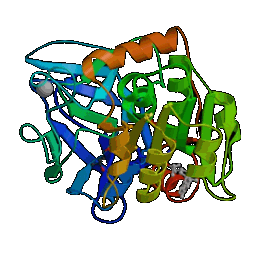
Generative Creativity - lecture 15:
Analogies
Introduction
Analogy-making is often seen as a key element of
creative thought, particularly in scientific and intellectual
activity.
Bongard problems provide a nice illustration.
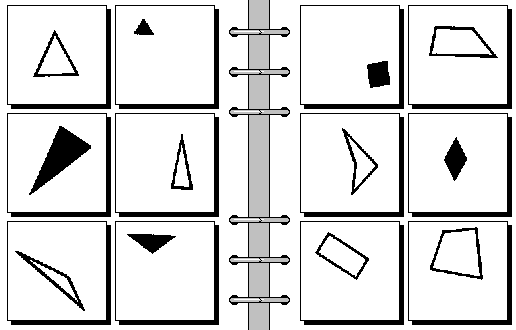 Solving a Bongard problem involves finding a rule which fits all
six images on the left page, but none of the images on the right
page. Go to http://www.cs.indiana.edu/~hfoundal/res/bps/bpidx.htm
and work through at least 10 such problems. Then write a list of
the similarities and differences between Bongard problems and
sequence-analogy problems.
Solving a Bongard problem involves finding a rule which fits all
six images on the left page, but none of the images on the right
page. Go to http://www.cs.indiana.edu/~hfoundal/res/bps/bpidx.htm
and work through at least 10 such problems. Then write a list of
the similarities and differences between Bongard problems and
sequence-analogy problems.
Koestler's bisociation theory
In Koestler's `bisociation' theory (from Koestler's `The Act of
Creation') the link with analogy becomes the central
focus.
All creative activity is viewed as a kind of analogy-formation.
Koestler's triptych

`The three panels of the rounded triptych ... indicate three
domains of creativity which shade into each other without sharp
boudaries: Humour, Discovery, and Art... Each horizontal line
across the triptych stands for a pattern of creative activity
which is represented on all three panels; ... The first is
intended to make us laugh; the second to make us understand; the
third to make us marvel.' (Koestler, The Act of Creation, p. 27).
Bisociation
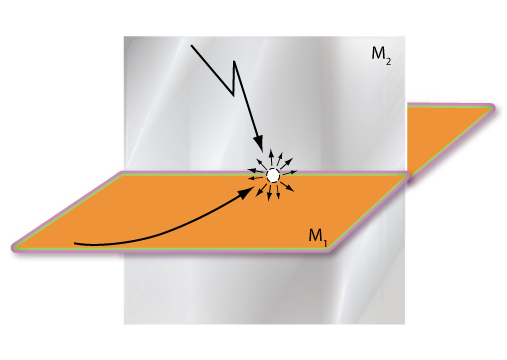 `I have coined the term `bisociation' in order to make a
distinction between the routine skills of thinking on a single
`plane', as it were, and the creative act, which, as I shall try
to show, always operates on more than one plane.' (p. 35)
`I have coined the term `bisociation' in order to make a
distinction between the routine skills of thinking on a single
`plane', as it were, and the creative act, which, as I shall try
to show, always operates on more than one plane.' (p. 35)
Bisociation is `the perceiving of a situation or idea ... in two
self-consistent but habitually incompatible frames of reference.'
(p. 35)
Humour
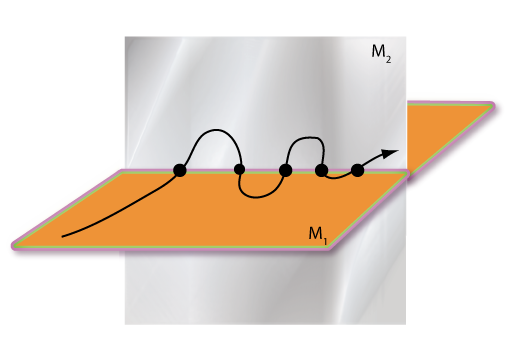 This figure `is meant to indicate what happens when a humurous
narrative oscillates between two frames of reference' (p. 38)
This figure `is meant to indicate what happens when a humurous
narrative oscillates between two frames of reference' (p. 38)
Discovery
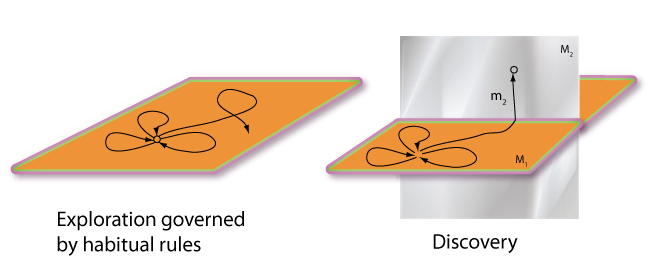
The figure depicts Archimedes's discovery of immersive volume
measurement.
`M1 is the [process of thought] governed by habitual rules of the
game, by means of which Archimedes originally tried to solve the
problem: M2 is the matrix of associations related to taking a
bath. m2 represents the actual train of thought which effects the
connection.' (p. 106)
Analogical systematicity
More recently, Dedre Gentner has formulated the
`structure-mapping' theory of analogical thought.
This has features in common with Koestler's bisociation theory but
relates specifically to analogy-making rather than to creativity
in general.

Gentner's model of the Rutherford analogy, after (Gentner, 1983, p. 160).
Structure mapping

Structural correspondences in the water/heat flow analogy, from (adapted from Gentner, Mechanisms, 1989, p. 211).
Summary
- Koestler's theory
- Koestler's triptych
- Bisociation
- Humour
- Discovery
- Analogical systematicity
- Structure mapping
Resources
- Various works by Koestler:
Koestler, A. (1964). THE ACT OF CREATION. London: Hutchinson.
Koestler, A. (1967). THE GHOST IN THE MACHINE. London: Pan.
Koestler, A. (1979). JANUS: A SUMMING UP. London: Pan.
Page created on: Mon Mar 2 15:49:11 GMT 2009
Feedback to Chris Thornton




